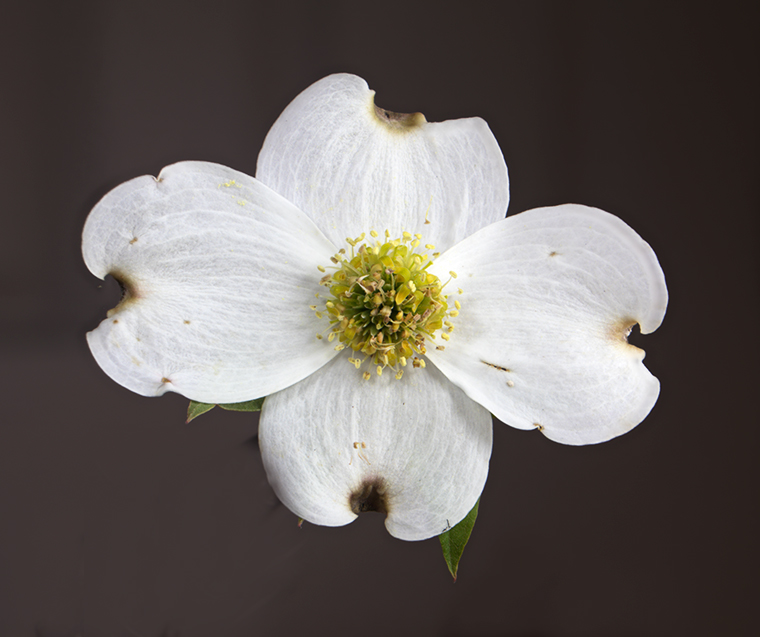
In my last post we discussed the Dogwood “flower”. I described the four large white modified leaves (bracts) that surround a group of small flowers in the center of the structure. It is time to continue our discussion by describing the cluster of true flowers.
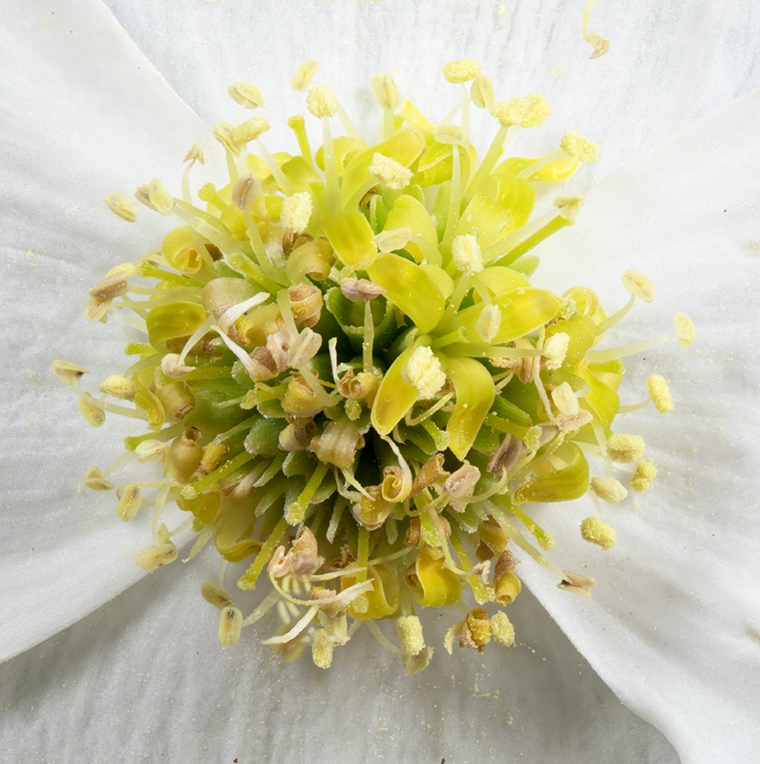
The flower cluster looks like a tangled mess when we zoom in on it. The most obvious things are lots of stamens sticking out in all directions. It is difficult to make out the individual flowers.
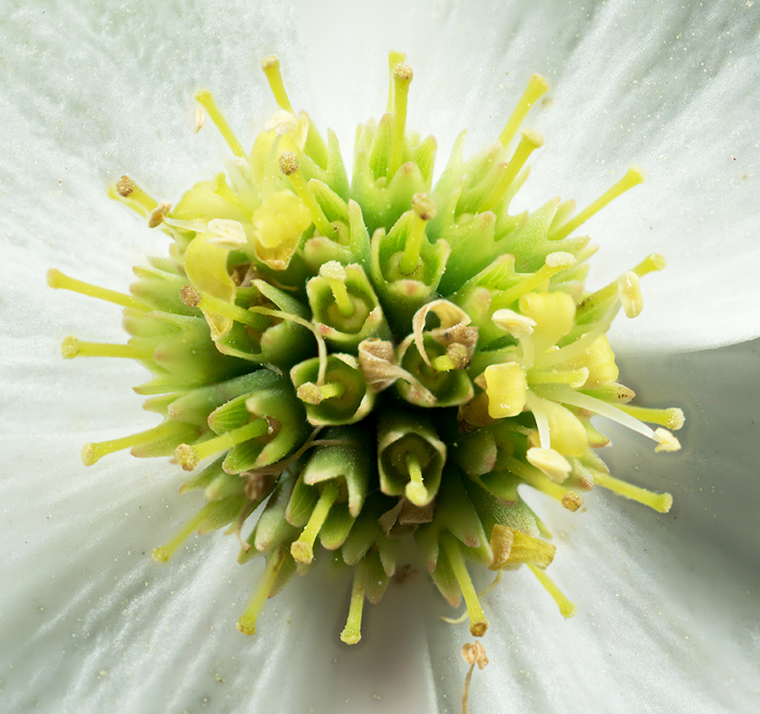
This is a view of a central flower cluster later in its development. Individual flowers are quite clear at this developmental stage. The stamens have mostly fallen off. The pistils remain. and the swollen stigmas shows at the end of each pistil.
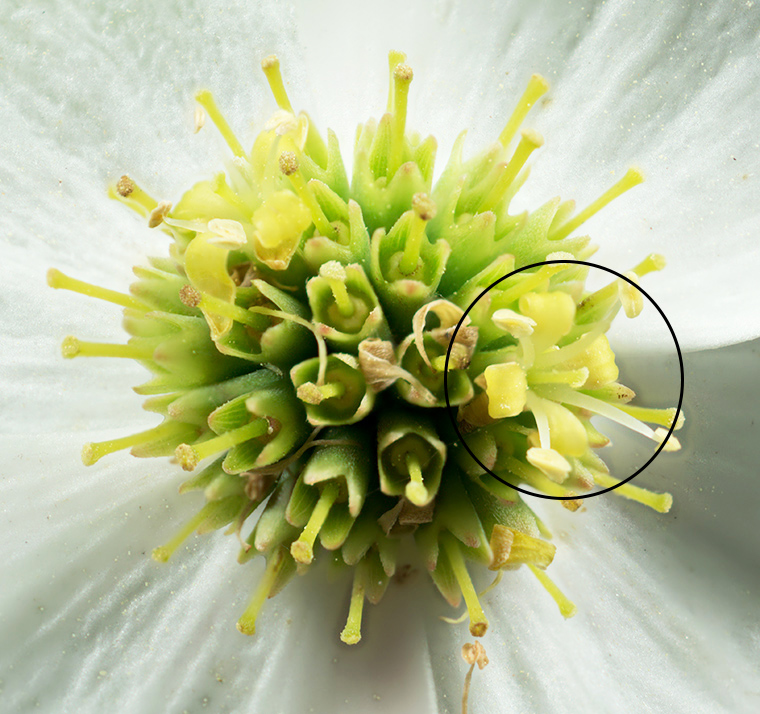
I have circled an individual flower in the photograph above. It is in a much earlier stage of development than most of the other flowers, and it still has all the parts characteristic of a younger flower.
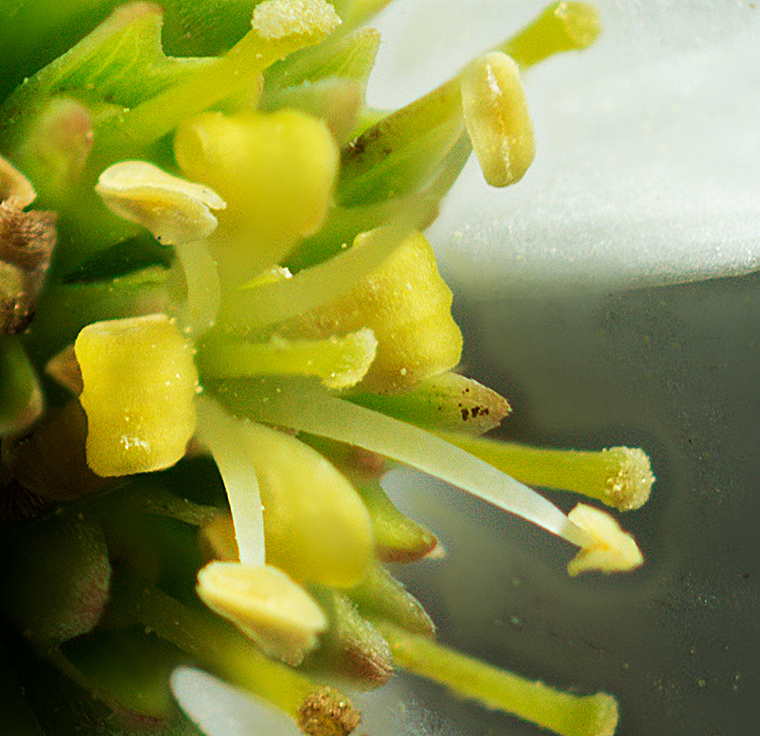
Here is a magnified view of the flower circled in the photograph of the entire flower cluster.
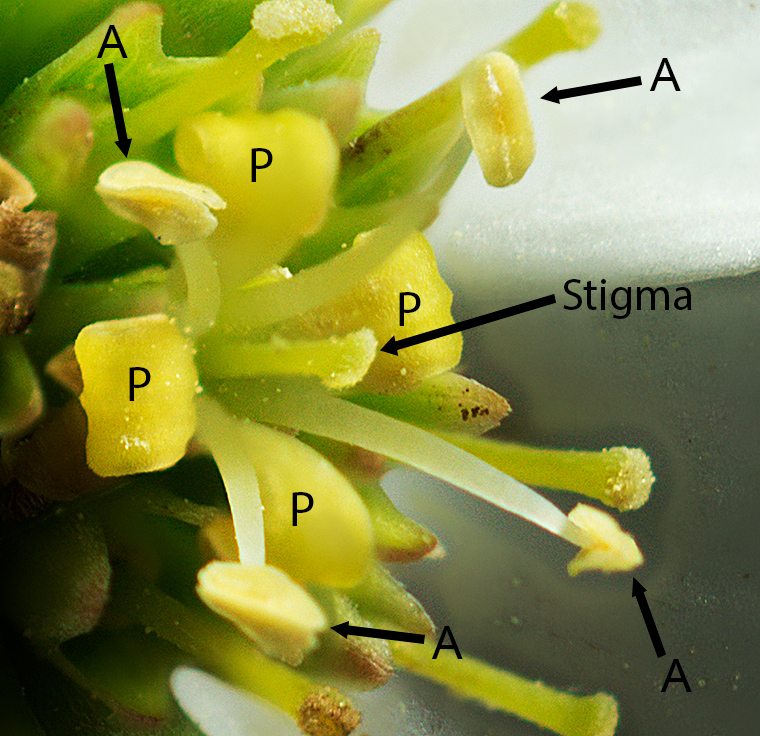
In the photograph above, I have labeled the parts of the flower seen in the previous seen above. Dogwood seems to live “fours”. The are four large white bracts surrounding the flower cluster, and each flower has four petals, and four stamens.
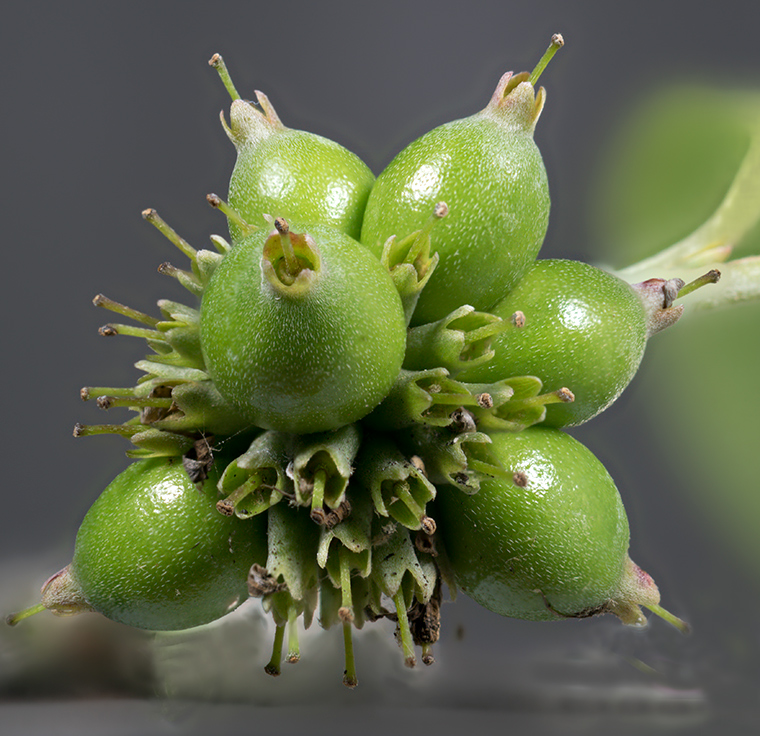
All the flowers shown in the previous photographs were taken on April 22. This photograph was taken on July 8. By this time some of the flowers have been pollinated, and fruits have started to form. (Dogwood fruits are most often called “berries”.) A large number of the flowers have not been pollinated and are not developing fruit. Dogwoods are obligate outcrosses. Each flower must receive pollen from another dogwood to be able to develop fruits. Pollinaters are most often small native bees.
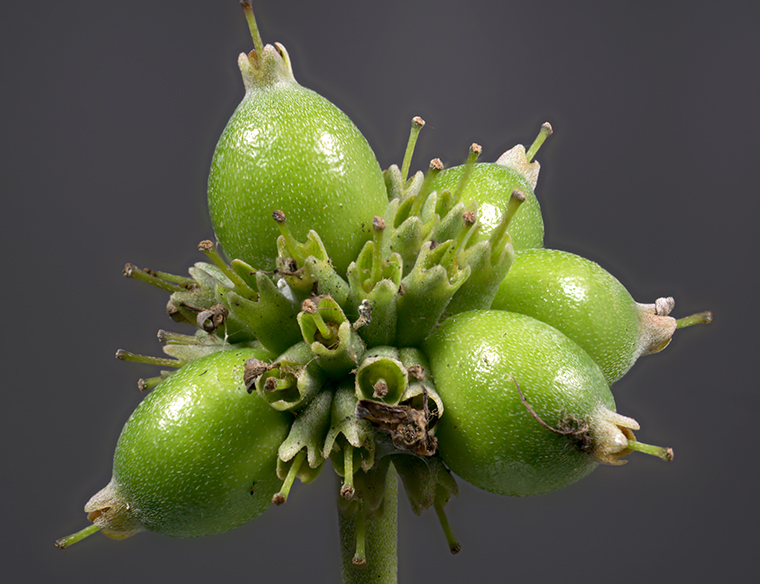
Another view of the same fruit cluster pictured above. Later in the summer or early fall, dogwood fruits turn a bright red. I do not expect the fruits on our Dogwoods to last long after their color change. We have lots of squirrels and birds around, and they enjoy ripe Dogwood fruits. If any make it through to the mature stage, l will try to photograph them for a subsequent post.
Discover more from A Naturalist's Journal
Subscribe to get the latest posts to your email.
